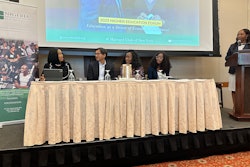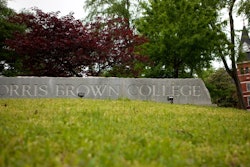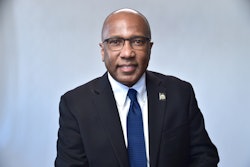Educators Urge Focus on ‘Year-Round’ College
New academic calendar would help low-income students, UNCF leader says
A year-round college calendar with flexible financial aid rules would help low-income students stay in school and allow colleges to expand enrollment without new facilities, a Black college leader and other educators tell Congress.
The traditional fall-to-spring academic year, created two centuries ago when most Americans worked in agriculture, has fewer benefits for today’s students and colleges, witnesses told a U.S. Senate panel. Under a year-round calendar, motivated students may complete their bachelor’s degrees in three years, while students in remedial courses could begin college with a smaller course load, said Dr. Michael Lomax, president of Dillard University in Louisiana and incoming president of the United Negro College Fund.
“There are clear advantages to year-round college for students on UNCF campuses and at all institutions of higher education,” Lomax said at a hearing before the Health, Education, Labor and Pensions Committee.
“Year-round college allows students, particularly Pell-eligible students, to pursue their baccalaureate degree in a more intense and focused manner,” he said.
The new academic calendar would require significant changes in financial aid rules, however. Pell Grants generally cover two semesters in an academic year, which means students in a full-scale summer program may have to do without federal aid. To address this problem, UNCF is recommending that Congress create a three-semester, year-round academic calendar with a three-semester Pell Grant. The third-semester Pell Grant would be the same size as the grant for each of the two other semesters.
“Guaranteed year-round grant aid allows students to really commit to their studies without working so many hours and without assuming an overwhelming loan debt burden,” Lomax said.
About 53 percent of entering freshmen must take at least one remedial course to prepare for the rigor of college-level work, according to Lomax. Many of these students would gain through a smaller course load early in their college careers, he said.
There is ample evidence that some students already are taking a slower approach to college, witnesses told the Senate panel. Only 36 percent of entering freshmen complete a bachelor’s degree in four years, according to U.S. Education Department data. This trend could end if more students had the option to take a broader range of courses during a summer term. But while most colleges offer some summer programs, they generally offer only a fraction of the courses taught during the traditional school year.
Another advantage of year-round college is more efficient use of campus facilities, said Stephen Trachtenberg, president of George Washington University in Washington.
Colleges today are scrambling to construct new buildings to accommodate more students, when a year-round calendar could ease overcrowding.
Colleges are “building new campuses and buildings and underutilizing the ones they’ve got,” he told the panel. In some cases, colleges may keep some of their academic buildings and dormitories open only six to eight months a year.
“Is there a business in America that would close facilities for six months while building new ones alongside them that would also run half a year? I don’t think so,” Trachtenberg said.
“At a time when fewer than 2 percent of Americans work in agriculture … such a (traditional school-year calendar) system is hopelessly out of date.”
Under a year-round calendar, GW could increase its enrollment by 1,000 students without building new facilities, he said. Not all students would attend through the year, he adds, and the staggered schedules would allow for more efficient use of the campus. The university also could offer more internships and study abroad programs for students taking a semester off, he added.
One college with a track record of year-round education touted the benefits of such an approach. Dartmouth College in New Hampshire moved to a year-round, four-quarter calendar in 1972 to expand enrollment without having to build new facilities. Students are expected to attend 12 quarters over four years, or an average of three sessions annually, said Virginia Hazen, the college’s financial aid director.
Few Dartmouth students actually graduate in three years; instead, most participate in internships or study abroad programs that supplement their academic experience. About 60 percent of Dartmouth students study overseas during their undergraduate careers. Others participate in internships during the fall or spring when more opportunities are available.
But the calendar presents financial aid challenges, she said. Students who attend all four quarters cannot get Pell Grant aid for the final quarter. Dartmouth provides institutional grants and loans for that period — an option that may not be feasible for most colleges.
“For a plan of year-round operation to succeed, these issues must be addressed,” Hazen told the panel.
As a first step, Trachtenberg is recommending that Congress set aside funds for a competitive grant to test the concept. Lawmakers could do so during their review of the Higher Education Act this year and in 2005. “In this information age,” he said, “when we know education is a full-time job, we cannot give universities a half-time appointment.”
© Copyright 2005 by DiverseEducation.com





















